Last Updated: September 22, 2024
Plovdiv, Bulgaria is the country’s second largest city, built around seven hills – the Plovdiv Tepes. In case you were wondering, the name has nothing to do with Vlad Tepes (Dracula inspiration we learned about in Brasov, Romania). Tepes means hills in Bulgarian, which is worth knowing as this word comes up a lot.
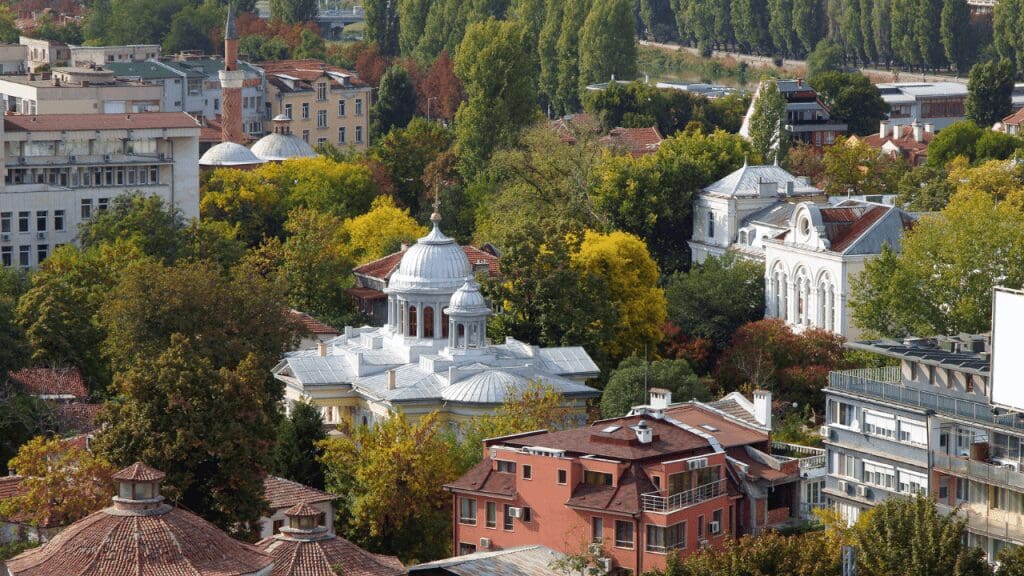
It is also one of the oldest European cities, its first settlement dating back around 8,000 years! And over the centuries, it had been conquered by the Greeks, Romans, Slavs, and the Ottomans. As a result, Plovdiv was renamed with every passing empire. But the one name that survived until today is Philippopolis, received from Philip II of Macedonia, the father of Alexander the Great, in 342 BC.

Plovdiv has more Roman ruins than it knows what to do with, which is fascinating to see alongside the vibrant artistic charm. To ensure you experience both sides, we’ve put together a list of top things to do in Plovdiv that will make you want to stay longer than intended!
Get the Lay of the Land
The best way to quickly get acquainted with the city is by taking a walking tour or hiking up Nebet Tepe. The first settlers in Plovdiv, Bulgaria resided on this hill, which has been continuously inhabited for around 8,000 years. The summit is covered with ruins of an ancient fortress, which opens up a view of the other hills and the Maritsa river piercing the city. Try counting the hills. If you seem to be missing one, that’s because it was demolished to be used as pavement for cobblestone streets. Nebet Tepe is also a great spot to catch the sunset. Get there ahead of time because it’s popular among locals.

Explore the Ottoman-Era Houses in Old Town
From Nebet Tepe, you can walk down to the cobblestone streets of the Old Town and take in the beauty of Ottoman-era houses. While some homes are still residential, many have been turned into museums. Pass by the History Museum and the Ethnographic Museum to see how the locals used to live and the ornately decorated Hindliyan House with a rose water fountain in the living room. It smells incredible!
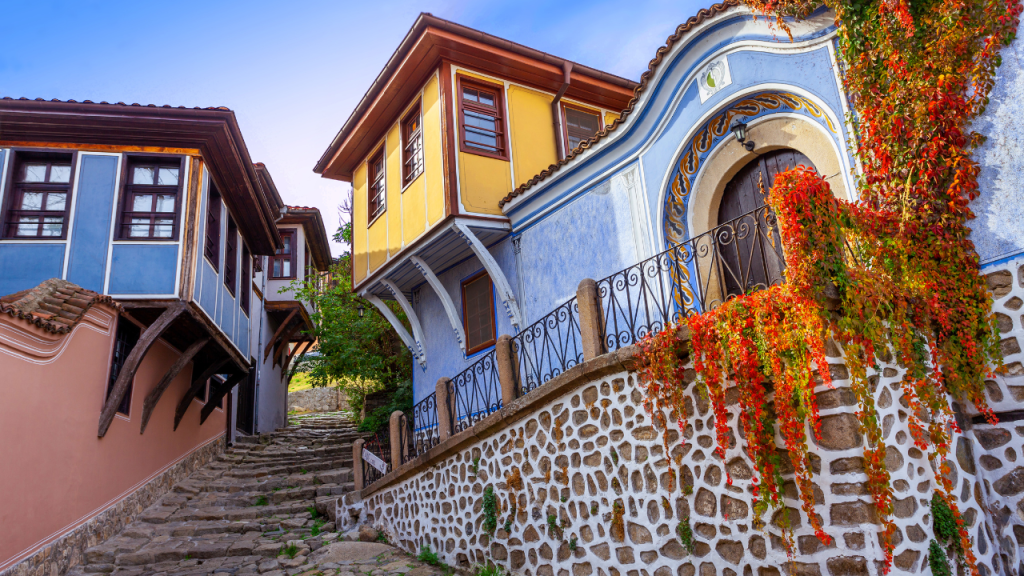
Watch a Performance in One of the World’s Best Preserved Amphitheaters
Visit the ancient theater, which was built around 90 AD and still hosts performances to this day! It’s located on a hill, so spectators sitting on the top marble seats can take in the views of the city and Rhodope mountains along the horizon. Apart from visiting the amphitheater, you can also enjoy a ballet performance. You can also listen to a choir as you ponder the remnants and those who sat in the same spot since the 1st century AD. The theater holds plenty of events every summer, so check out the program and book your tickets here.
Wander Around the Creative Quarter
The vibrant Kapana, located in the city center, is a cultural and hip district. It is where cobblestone meet street art and charming cafes. The construction of this district started in 2014 in preparation for its tenure as the European Capital of Culture in 2019. By the way, if you want to find out what city made the cut for the European Capital of Culture in 2023, we’ve got you covered! (Timisoara). The name Kapana, meaning ‘the trap,’ comes from its labyrinthine streets, which are so photogenic that you won’t notice the time passing. So instead, spend an entire afternoon wandering and appreciating the street art and craft shops at some of Plovdiv’s hottest restaurants.
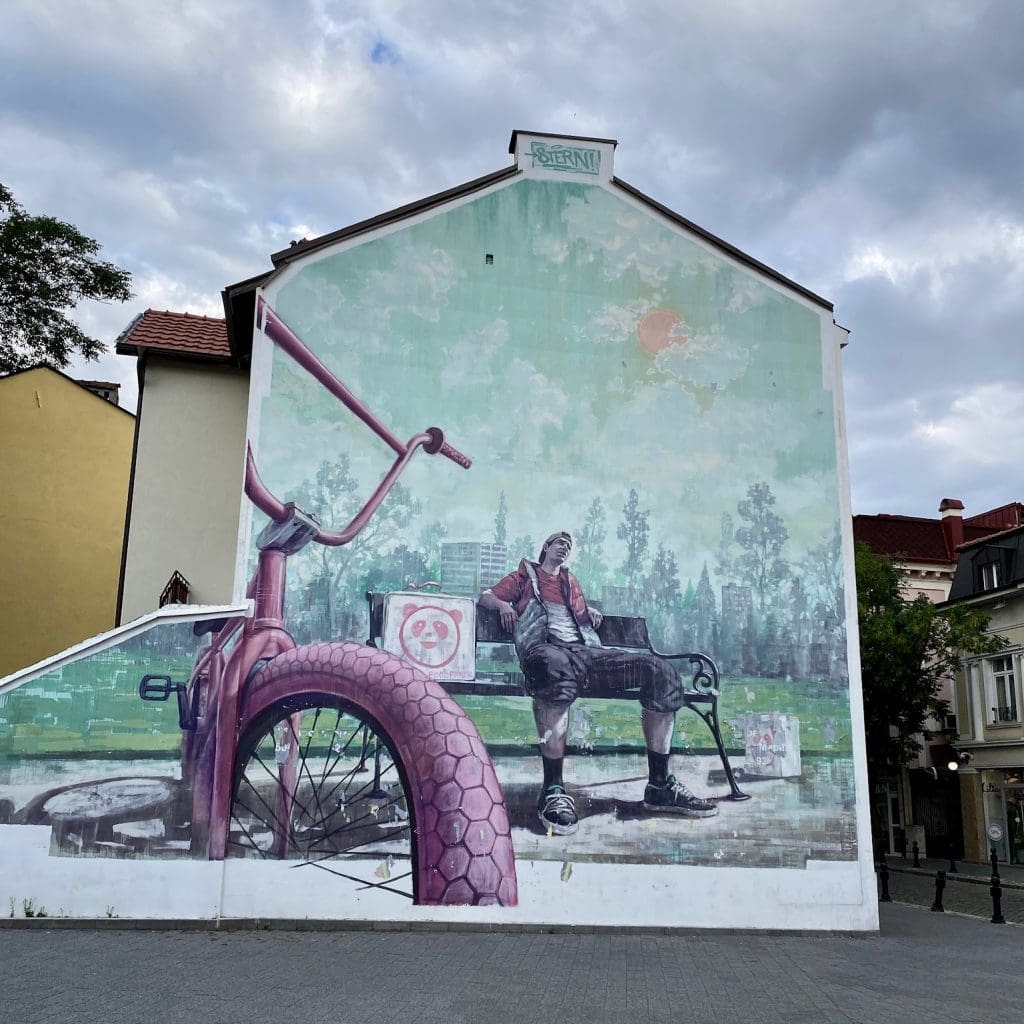
Visit Alyosha at Sunset
Hike up another one of Plovdiv’s hills, Bunardzhika, to see the statue Alyosha that towers over the city. The figure is dedicated to the Soviet soldiers who liberated the town during WW II. There is controversy about whether Alyosha should remain erect, serving as a reminder of Bulgaria’s Communist period. But, for now, it’s an impressive sight that makes everything else seem tiny.
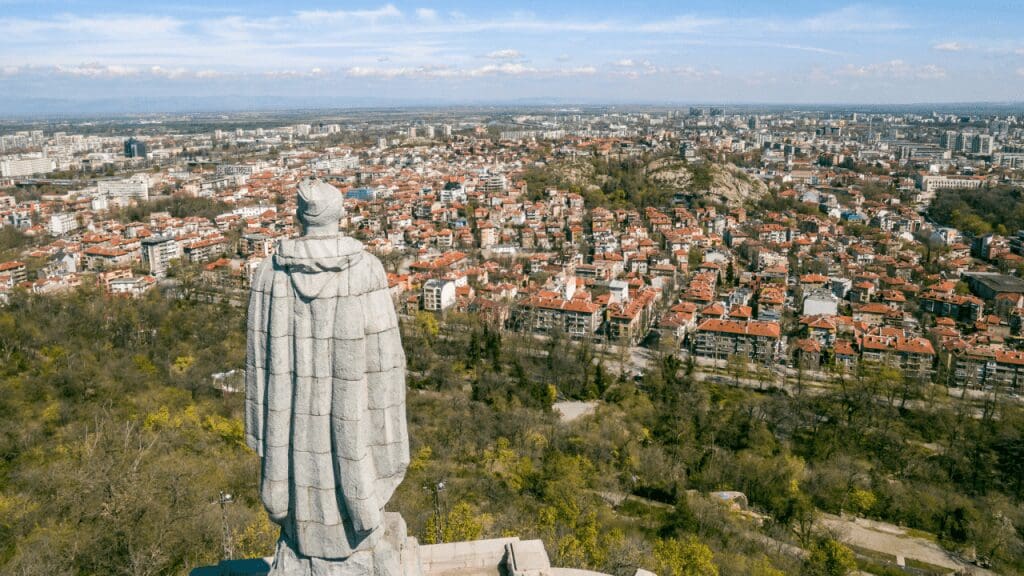
Marvel at Mosaics of Mystic Birds
The Bishop’s Basilica of Philippopolis, or the Great Basilica, opened up to the public only in 2021. The ancient church was excavated and restored in 2019. The most remarkable sight is the preserved mosaics featuring unique bird motifs. The intriguing part is that, reportedly, none of the represented birds are native to Bulgaria.
Walk the Longest Pedestrian Street in Europe
Knyaz Alexander I Street is the main shopping street in Plovdiv, Bulgaria that joins the Old Town with the Kapana district. And 1750 meters in length, it is the longest pedestrian street in Europe. We reckon people’s laid-back nature and love for long walks probably have something to do with that.
Aside from boutiques and cafes, you will also find some unexpected sights like the historical Dzhumaya Mosque. It was erected by the Ottomans in place of a Cathedral and a Roman Stadium.
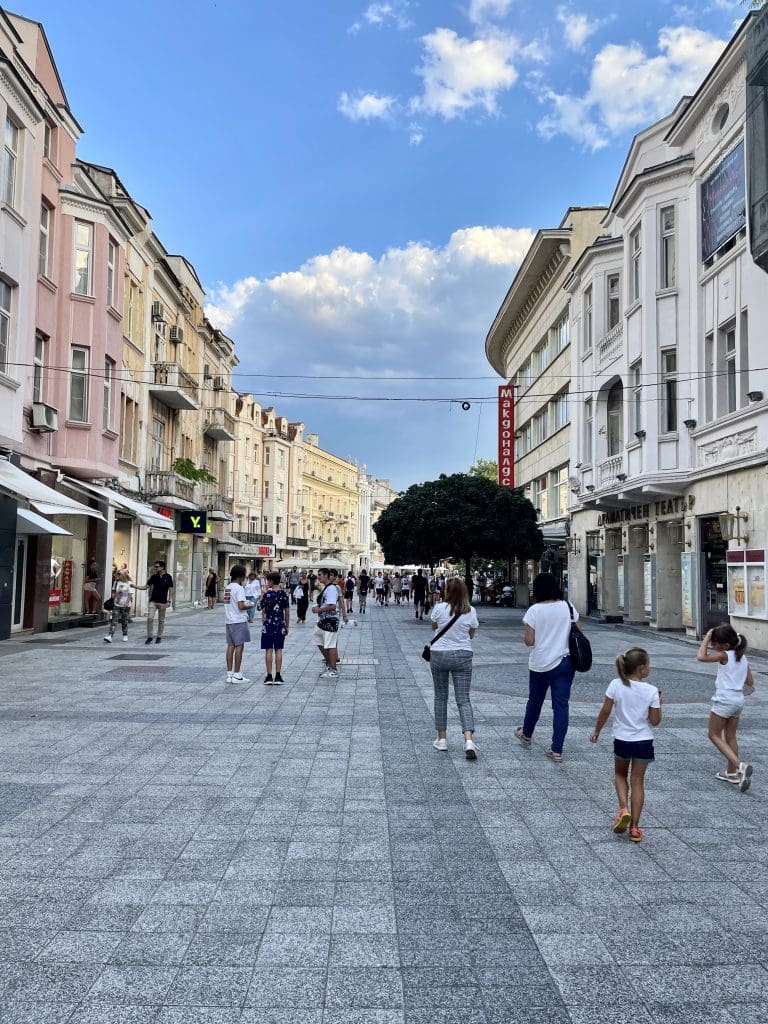
The Stadium that used to seat over 30,000 spectators back in its days is only partially excavated and offers a slice of ancient history right in the middle of your shopping spree. Like many other sites, the Stadium is fully accessible, which satisfies the fascinated inner child wanting to touch these marvels.
Go on a Road Trip to the Rhodope Mountains
The Rhodope Mountains on the border with Greece perfectly combine cultural festivals, nature, and traditional villages. We took a road trip through this region, and although the roads leading up to attractions are narrow and difficult to navigate, the experience was worth it.
Stop in Shiroka Laka to marvel at the traditional architecture and have a patatnik for lunch. This delicious Bulgarian cheesy potato pie is from this region, by the way! And visit the tiny village of Gela, famous for its annual bagpipe competition held on the first weekend of August.
Once fueled, venture out to find the Eagle eye lookout point. Make sure to start early in the day if you want to hike there, as it’s about two hours away from the main road, but jeep tours are also an option.
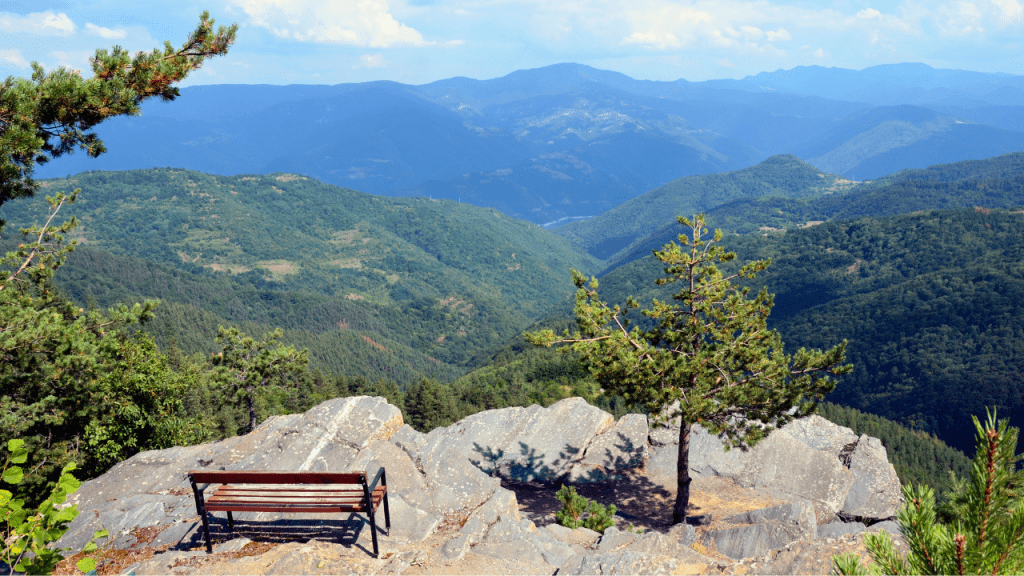
Unique Places to Eat in Plovdiv, Bulgaria
Plovdiv offers an array of cafes and restaurants to choose from. Traditional dishes in old houses of the Old Town or modern fusions in quirky settings of Kapana. The local food scene is for the seasoned traveler (pun intended)!
We covered the Bulgarian must-tries in our post about Veliko Tarnovo (link), so check it out to know what to order when dining at our favorite restaurants in Plovdiv.
Philippopolis is one of the best restaurants in Plovdiv. Dining there is an entire experience as their extensive menu is accompanied by the best rakia in town, stunning views from the terrace, and a feeling like eating in a museum. Head there for lunch while you explore the Old Town or for a romantic evening.
As you wander around Kapana, stop by gastropub Pavaj to sample their modern takes on traditional cuisine. Their dishes incorporate only the most unique Bulgarian ingredients, some of which they grow themselves too!
If you enjoyed Pavaj, you are going to love Aylyakria! This place offers traditional flavors with a modern twist and a unique mission to engulf guests in positivity and delight with every bite. The name Aylyakria stems from the Bulgarian idiom ‘Aylyak,’ which originated in Plovdiv, synonymous with ‘Hakuna Matata.’
For a more upscale experience, head to Hemingway. A bohemian-style restaurant serving Bulgarian and European dishes accompanied by live piano music.

Plovdiv was a spontaneous addition to our Bulgaria itinerary. We arrived for its historical value and wanted to stay longer for the invigorating ambiance, the result of either the Mediterranean influence or the Aylyak philosophy. Let us know if you have any questions in the comments below and share some fun idioms in your language!
Best Time to Visit Plovdiv, Bulgaria
We have linked a great website to this button showing the weather for this location by the month. Click below to be taken to Weather-and-Climate.com.

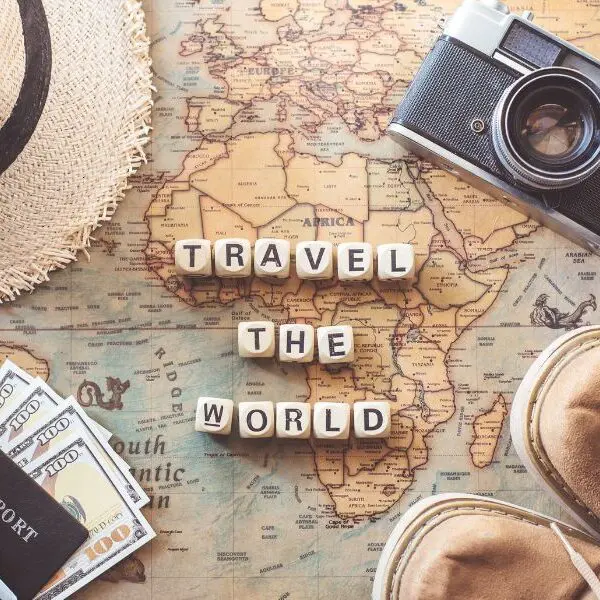
Radosveta Doytcheva
Did not appreciate your comments about the frescoes in the Fortress church in Veliko Turnovo, Bulgaria.
The biblical frescoes in this church are modern, done to our times standards and are not looking at art in a rearview mirror. Expressive and similar to the effect of Michelangelo’s nude paintings in the Sistine chapel. Was it new? yes. Was it timeless, yes.
Refrain from opinions, you are not art critics.
Retirement Travelers
“Finish the tour at the Patriarchal Cathedral, perched on the hilltop inside the fortress. It was built around 1235 and has been restored since then. Unfortunately, the typical frescos had been replaced with unusual murals, which is why it no longer functions as a church but as a museum. If the paintings don’t impress you, the panoramic view over the town certainly will!”
It is true, these frescos do no appeal to everyone. We believe art is subjective and the world would be very flat and uninteresting if everyone agreed to what art should look like and what it shouldn’t. We didn’t say we didn’t appreciate it as art, only that our readers might find them non-typical. If our comment is offensive, that was not our intent. On the flip side, everyone is an art critic, including you and us! Thanks for your comment! John & Bev